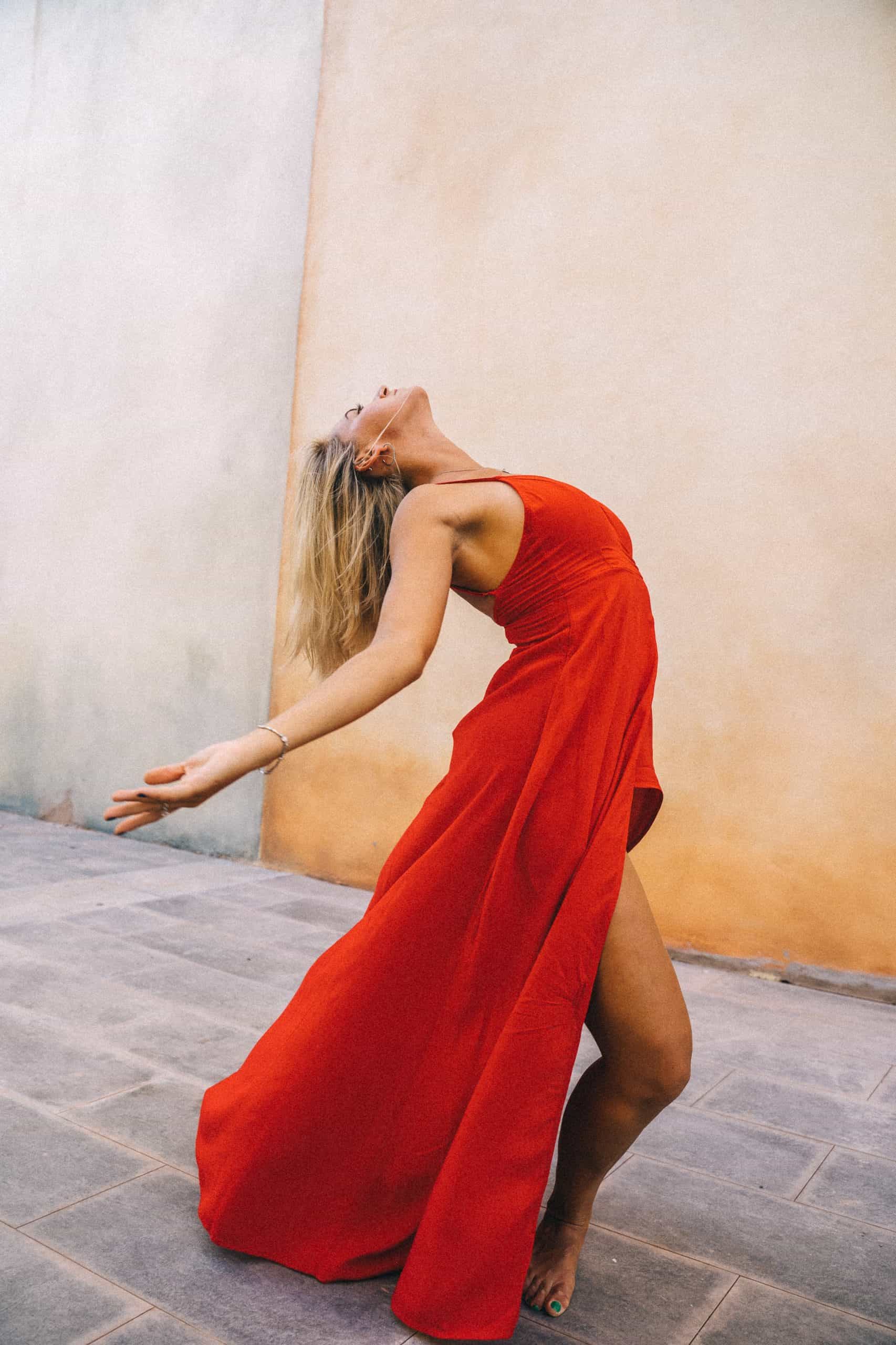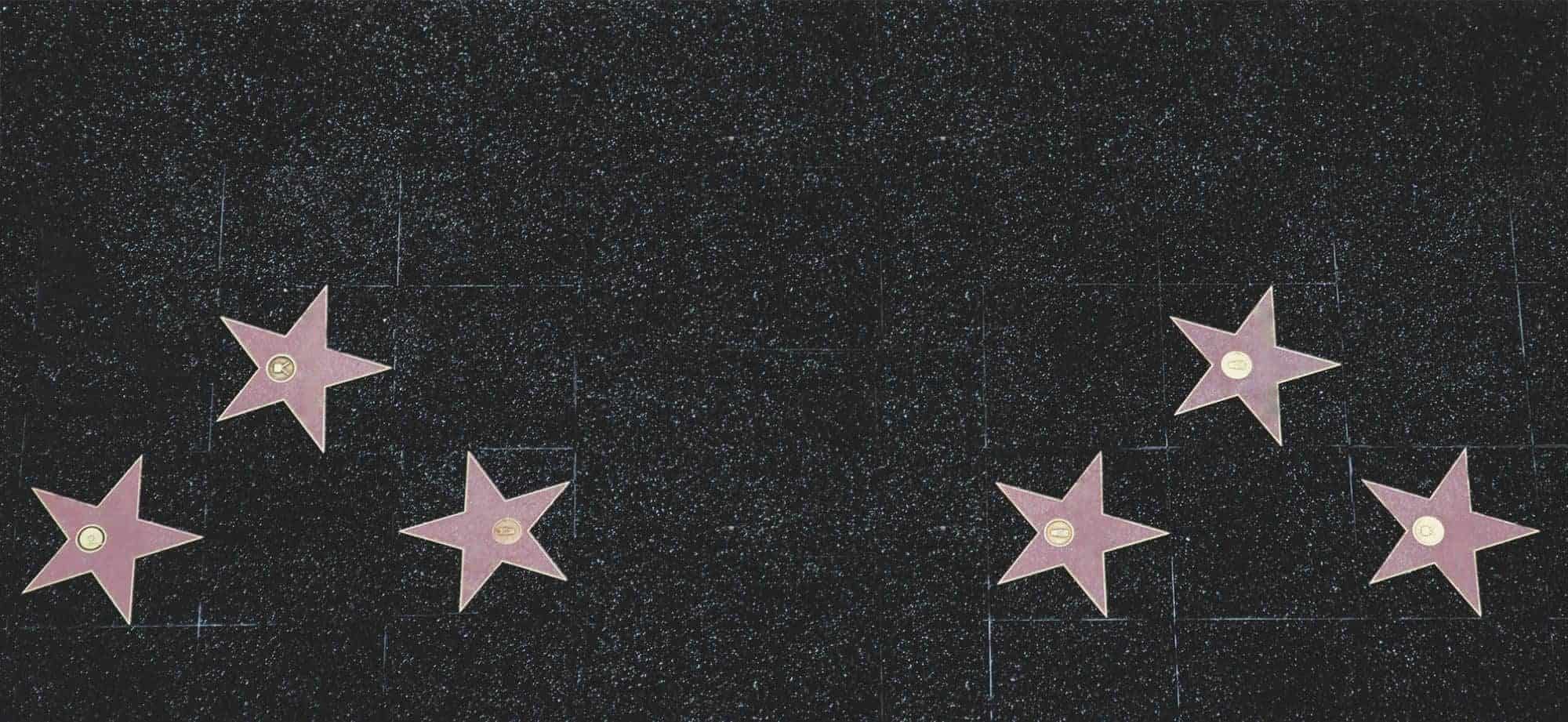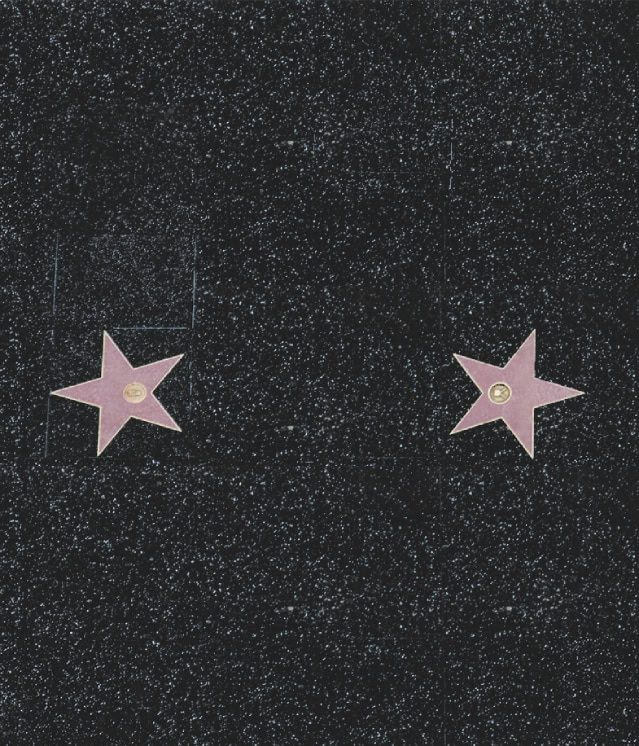
How to use dance to improve your acting
In the acting world, there’s an art that can transform performances. It’s called dance! With the power of movement and expression, dance has been used as an acting booster. Embrace its transformative qualities to unlock creativity and authenticity in performances.
Dance offers actors a special way to explore feelings and become characters more deeply. The physicality of dance helps performers connect with their bodies in ways traditional acting won’t. Through intricate movements and choreography, actors can explore characters and bring them alive on stage or screen.
Dance also boosts an actor’s presence and stage awareness. Learning different dance styles helps command attention and engage with audiences. From ballet’s elegance to hip-hop’s rhythms, actors can use their bodies for expression and captivate viewers.
Dance has a long history in theatrical performances. Ancient Greek tragedies and Broadway musicals merge acting and dancing. Together they create unforgettable performance moments.
Aspiring actors, consider adding dance to your training. Take formal classes or embrace movement exercises at home. The benefits are priceless. Use dance as a tool for self-expression and character development. You’ll discover new possibilities in your acting journey.
The Benefits of Using Dance to Improve Acting Skills
Dance offers actors numerous advantages. It bolsters physicality, enabling them to express feelings and gestures with more ease. It also increases body awareness and posture, so they can play characters with better authenticity. Furthermore, it develops coordination and rhythm, helping synchronize movements with dialogues. Plus, it encourages creativity and improvisation skills, allowing them to think quickly during performances.
A special benefit of adding dance to acting is its ability to foster storytelling capabilities. Through dancing, actors can reveal narratives without relying on dialogue. They can portray complex emotions and themes with their movements, adding nuance and vitality to their acts. This engages viewers more effectively.
Natalie Portman’s award-winning performance in “Black Swan” shows how dance can elevate an actor’s artistry. To prepare for the role, she trained intensely in ballet. Her hard work paid off, as she gave an outstanding performance that wowed critics and won her an Oscar. This proves that dance transforms an actor’s act into something extraordinary.
Understanding the Relationship Between Dance and Acting
To understand the relationship between dance and acting and improve your acting abilities, explore the similarities between dance and acting. Discover how dance enhances and supports your acting abilities.
Exploring the Similarities between Dance and Acting
Dance and acting have some undeniable similarities. They both involve performers expressing emotions, telling stories, and captivating audiences with their movements and actions. It’s more than just an observation.
Performers must totally embody their roles in both forms. Actors must understand their characters deeply, and dancers must communicate the dance’s essence through their bodies and expressions. Both need to connect with their emotions to connect with the audience.
Technique and skill are important for both. Actors use vocal control, body language, and stage presence, and dancers need agility, strength, flexibility, and accuracy. Both require years of training and practice to master.
Plus, they’re both collaborative. Actors and dancers may work together in a team or ensemble. They need to support each other, act together, and create a great onstage atmosphere.
Let me tell you a story about Audrey Hepburn. In ‘My Fair Lady’ she had to lip-sync to songs she’d already recorded, but she couldn’t do it convincingly. She got inspiration from her ballet background. She used breath control and precise movements while lip-syncing, combining her acting and dance skills to perform well.
How Dance Enhances and Supports Acting Abilities
Dance and acting go hand-in-hand. This connection strengthens an actor’s skills, giving them the ability to bring their characters to life on stage or screen.
- Dance boosts body control. This helps actions look more realistic in a performance. Movements picked up through dance also help actors to accurately portray emotions, gestures, and spatial relationships.
- Dance makes it easier to tap into emotions. Exploring different styles of movement and expressing yourself physically develops emotional intelligence. This gives an actor access to a broader array of feelings for their performance.
- Dance sharpens focus, dedication, and perseverance. This carries over to the actor’s craft. Furthermore, having rhythm and timing from dancing is important for dialogue pacing and smooth stage movements.
Plus, dancers-turned-actors have additional advantages. They can quickly adjust to different characters because of their flexibility. Moreover, due to dance training, they have excellent posture and alignment which adds elegance to their acting.
Pro Tip: To make the most of dance and acting, actors should attend dance classes regularly. The skills acquired will make them more diverse performers who impress audiences with their physical and emotional presence.
Step-by-Step Guide: Using Dance to Improve Your Acting
To improve your acting with dance, follow this step-by-step guide. Start by choosing a dance style or technique, then find the right dance classes or workshops. Incorporate movement into acting exercises and warm-ups. Practice choreographed routines to improve physicality on stage. Lastly, use dance to enhance emotional expression in acting.
Step 1: Choosing a Dance Style or Technique
Choose the right dance style or technique to advance your acting skills. There’s ballet, contemporary, jazz, hip-hop, salsa, and belly dancing. All of these have unique moves and styles.
Think about your preferences and strengths when picking a style. If you want to be smoother on stage, ballet might be a great choice. If you want to have more energy onstage, consider jazz or hip-hop.
Research the history of each dance form. This can help you connect to it more and make your performance more authentic. Experiment with different dance styles too. You may discover new physicalities and movement vocabularies to use.
Gene Kelly revolutionized musical theater by combining dance and performance. Movies like “Singin’ in the Rain” showed how movement can improve storytelling.
By choosing a dance style that suits you, learning its history, and being inspired by those who came before you, you can learn to captivate audiences through movement and words.
Step 2: Finding the Right Dance Classes or Workshops
Searching for the perfect dance classes or workshops is key to improving your acting! Here’s a quick guide to help you out:
- Research: Search for reliable dance studios or schools in your area that offer classes or workshops for actors. Check online directories, websites, and local listings for details.
- Evaluate Your Schedule: Figure out how much time you can commit to dance classes. Look for options that match your availability, such as evening classes, weekend workshops, or flexible programs.
- Analyze Dance Styles: Different dance styles have benefits for actors. Think about the type of movement you want to explore and pick classes that fit your interests. From ballet to jazz and contemporary to hip-hop, each style has something special.
- Ask for Recommendations: Ask other actors or industry professionals for suggestions on trustworthy instructors or studios known for their great dance programs for actors. Their advice and input can be invaluable in making a good choice.
- Try Out a Class: Before signing up long-term, take advantage of trial classes or introductory offers from the studios or schools you’re interested in. This allows you to experience the teaching style, atmosphere, and level of instruction before deciding.
Also, make sure to ask about any prerequisites or requirements for joining a particular class or workshop when contacting potential studios.
It is important to find a place where you feel comfortable exploring movement with other actors seeking similar growth opportunities.
Fun Fact: According to ‘The Hollywood Reporter,’ actor Hugh Jackman said that his extensive dance training was essential in developing his versatility as an actor.
Step 3: Incorporating Movement into Acting Exercises and Warm-ups
Movement in acting exercises is great for improving your skills. Add dance elements to your routine to increase physicality, expressiveness, and performance. Here’s a 5-step guide to help you:
- Start with a gentle warm-up. Do some stretches and breathing exercises to loosen up your body and muscles.
- Explore different dance styles. Get to know ballet, contemporary, jazz, hip-hop, and more. Find what suits you best.
- Focus on body awareness. Notice how you use your body during exercises. Engage your muscles and refine your movements.
- Incorporate choreography. Create routines that fit the scenes or characters. Add visual elements and enhance storytelling.
- Practice improvisation. Use dance-inspired movements to express emotions and tell stories. Expand range as an actor.
Always have an open mind and willingness to try new things. Embrace the synergy between dance and acting. Robert Downey Jr. studied martial arts and ballet and found it improved his performance. Let your body do the talking on stage or screen!
Step 4: Practicing Choreographed Routines to Improve Physicality on Stage
Enhance your stage presence with choreographed routines! For best results, follow these steps:
- Choose a routine that aligns with your character. Think about the emotions and movements needed.
- Break it down. Master each part before moving on. Practice to build muscle memory.
- Embody the character: Facial expressions, body language, and energy are key.
- Add personal flair. Vary it and reflect your interpretation.
Choreographed routines improve your physicality and stage presence.
Fun fact: Hugh Jackman trained in dance at the Western Australian Academy of Performing Arts. His dance background led to his versatility as a performer.
Step 5: Using Dance to Enhance Emotional Expression in Acting
Understand the power of movement to unlock emotional expression. Dance is more than physical moves. It’s a language. Use choreography to add complexity to your performance. Work with a choreographer or teacher to make choreography match the emotional arc of your character. Use dance techniques to access emotions. Examples are breath control, body alignment, and fluidity of movement.
Integrating dance into acting lets you access emotions in a unique way. It adds depth by combining physicality and the inner world of characters. Improvisation exercises that combine elements of dance and acting can help you discover new ways of expression. Also, study various dance styles from different cultures.
Dance and acting techniques together let you access challenging emotions. The physicality of dance allows you to tap into the essence of your character, adding more authenticity and depth to performances. Use dance to enhance emotional expression in acting and watch your performances elevate!
Tips for Successfully Implementing Dance in Acting Training
To successfully implement dance in your acting training, aim for consistency and regular practice. Seek professional guidance and feedback to enhance your skills. Additionally, explore collaboration opportunities with dancers and choreographers for a well-rounded approach. Incorporating these tips will help you harness the power of dance to improve your acting.
Aiming for Consistency and Regular Practice
Consistency and regular practice are essential for successful dance-acting training. These habits of practice will bring continuous improvement and a strong foundation in movement. Here is a 5-step guide to achieve this:
- Set goals: Decide what you wish to gain from dance-acting. This will provide motivation.
- Schedule: Set times for practice and be punctual. Treat them as important meetings with yourself.
- Find accountability partners: Join a class or group that shares your goals. They can provide support, advice, and encouragement.
- Mix it up: Try different styles of dance. This will keep it interesting and help you grow as a performer.
- Celebrate milestones: Congratulate yourself when you reach milestones. This will keep your motivation and dedication.
It’s great to try other genres of dance, such as contemporary and hip-hop. This adds versatility to your performance and allows you to portray different characters.
Gene Kelly was a legendary actor who revolutionized the integration of dance and acting in Hollywood’s Golden Age. His performances were a perfect blend of narrative and amazing dance routines.
Follow these tips for consistent and regular practice. This will allow you to express yourself on stage or screen. Keep pushing boundaries, refining your craft, and unifying dainty footwork with captivating character portrayals.
Seeking Professional Guidance and Feedback
Professional guidance and feedback are essential for the successful integration of dance into your acting training. Seek expert help to gain insights into various dance forms and techniques. Mentors can provide personalized feedback on your dancing skills, helping you identify areas for improvement.
They can also help choose the right style of dance that suits your acting style and emphasizes the story aspect. Their expertise and experience will guide you in selecting the right choreography to effectively convey emotions and strengthen the narrative.
Seeking professional help allows for constructive criticism. Honest feedback from experts helps you evolve and refine your skills. It provides an opportunity to learn from seasoned professionals who understand both dance and acting.
Establish a trusting relationship with your mentor. This open communication creates a safe space to experiment and express yourself. Don’t miss out on this valuable opportunity for growth.
Take advantage of the knowledge professionals can offer. Embrace this chance to learn from those who excel in their profession. Letting go of fear and seeking professional guidance will bring transformation to your acting career.
Exploring Collaboration Opportunities with Dancers and Choreographers
Actors have the chance to experience a new type of expression when they join with dancers and choreographers. Dancers bring a unique view of movement which can help an actor’s presence on stage or screen. Through this cooperation, actors can use their bodies to share emotions and plans with dance-like movements. By introducing dance into acting training, actors can make more vibrant performances.
Furthermore, by working with choreographers, actors get to understand the craft of making movement sequences for performances. Choreographers usually utilize special techniques and styles to express meaning through dance. By working with them closely, actors gain knowledge on how movement can be utilized as a device for storytelling and character growth. This understanding adds dimension to an actor’s performance and increases their ability to make gripping narratives.
In addition to exploring new forms of artistry, collaborating with dancers and choreographers also cultivates interdisciplinary communication abilities. When artists from different fields come together, they must find ways to communicate properly in order to make smooth performances. This collaboration teaches actors crucial skills such as active listening, versatility, and teamwork.
One example of successful collaboration between dancers and actors is the production of West Side Story on Broadway. In this famous musical, the cast members had to mix acting and dancing to portray the two gangs of New York City. The choreography by Jerome Robbins was essential in telling the story via movement. The collaboration between the dancers, actors, and choreographers created a powerful performance that still enthralls viewers today.
Case Studies: Examples of Actors Who Used Dance to Improve Their Craft
Acting and dance are an amazing combo! Many actors have tapped into this power tool to improve their craft. By studying the techniques and movements of dance, these actors can bring a greater level of physicality and expression to their roles.
For example, Hugh Jackman credits his ballet and jazz training for helping him develop a strong presence on stage and screen. He adds fluidity and grace to his characters’ movements by incorporating dance in fight scenes.
Donald Glover is another actor who has benefited from incorporating dance into his craft. He has showcased his dancing skills in music videos, live performances, and “Atlanta.” With precise and rhythmic movements, Glover can embody the characters he portrays.
Actors can incorporate dance into their training and preparation. Taking classes in various dance styles helps develop body awareness and flexibility. As warm-ups before rehearsals or performances, dance exercises help actors loosen up and connect with emotions.
Musicals also provide an opportunity for actors to combine acting and dancing. The choreographed routines demand the actors to tell a story through movement.
Incorporating dance into acting can enhance performances. From physicality to expression, dance offers unique tools to take an actor’s craft to new heights. By studying the techniques of dancers, actors can create captivating performances.
Conclusion: Embracing the Power of Dance in Enhancing Acting Abilities
Dance is a major asset for any actor. Adding dance moves to performances brings new energy, emotion, and expressiveness. With dance, actors can tap into the body in ways traditional methods can’t.
Integrating dance into acting adds a dynamic element. It also helps actors become more aware and in control of their bodies. Dance training strengthens posture, coordination, and flexibility, creating more believable and moving characters. Dance teaches actors to use body language to communicate complex feelings and stories.
Dance encourages actors to move out of their comfort zone and take risks. By “dancing like no one is watching,” actors can dive into the depths of their characters.
Acting and dancing don’t require becoming a professional dancer. Even the basics of dance can help actors grow. From learning energy types to understanding rhythm and music, dancers have knowledge actors can use to better their craft.
Tip: Use dance elements in your warmup before rehearsals and performances. This helps activate the body and mind, letting you get into the physicality of your character.
Frequently Asked Questions
FAQ 1:
Question: Can dance really improve my acting skills?
Answer: Yes! Dance can greatly enhance your acting abilities. It helps you develop body awareness, coordination, and expressiveness, which are essential skills for any actor.
FAQ 2:
Question: How does dance help in expressing emotions while acting?
Answer: Dance allows you to understand and convey emotions through movements. Learning different dance styles helps you explore a wide range of expressions, thereby improving your ability to deliver emotions effectively in acting.
FAQ 3:
Question: Can dance improve my physicality on stage?
Answer: Absolutely! Dance improves your body control, strength, and flexibility, enhancing your overall physicality on stage. It enables you to portray characters with the necessary physicality and presence required for impactful performances.
FAQ 4:
Question: What dance techniques should I focus on for acting?
Answer: It is recommended to explore different dance techniques like ballet, contemporary, jazz, or even cultural dances to diversify your movement vocabulary. Each style offers valuable techniques that can be applied to acting, allowing you to bring unique qualities to your performances.
FAQ 5:
Question: Can dance training improve my improvisation skills in acting?
Answer: Absolutely! Dance training helps you think on your feet, adapt to different movements and rhythms, and foster creativity. These improvisational skills directly translate to acting, making you more spontaneous and responsive on stage or on camera.
FAQ 6:
Question: Is it necessary to be an expert dancer to benefit from it in acting?
Answer: No, being an expert dancer is not a prerequisite. Even basic dance training can provide significant benefits to your acting. The key is to understand your body, improve coordination, and gain a sense of rhythm, all of which can enhance your overall performance as an actor.
Subject: How to use dance to improve your acting
Company: Hollywood Connections Center
Network: MyHollywoodPage.com
The Hollywood network of arts and creative professionals.





